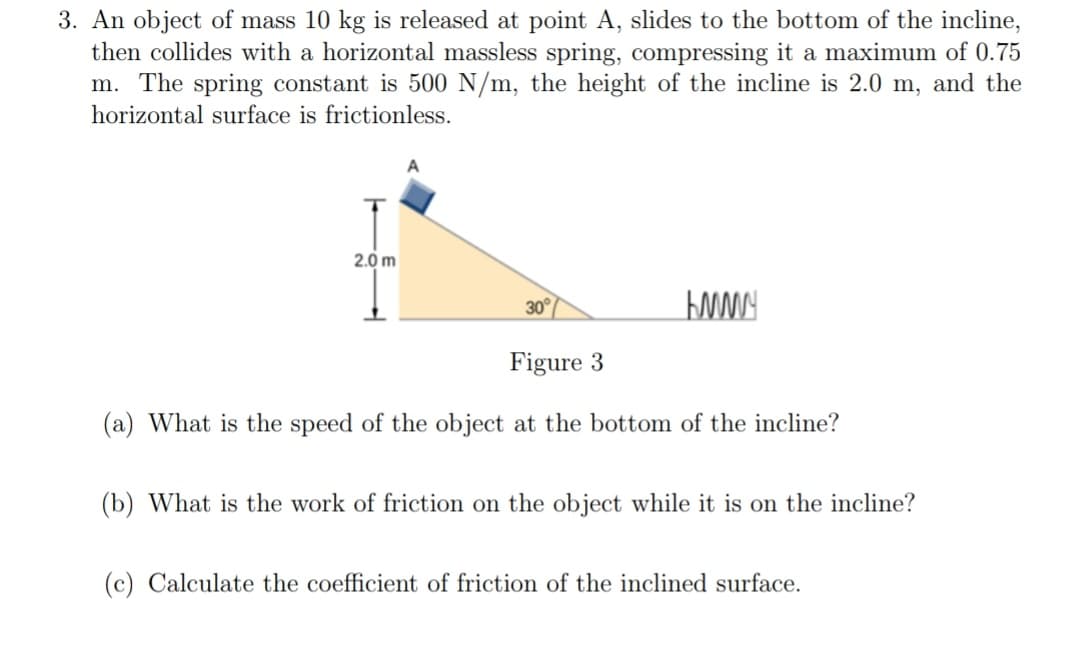An object of mass 10 kg is released at point A, slides to the bottom of the incline, then collides with a horizontal massless spring, compressing it a maximum of 0.75 m. The spring constant is 500 N/m, the height of the incline is 2.0 m, and the horizontal surface is frictionless. A 2.0 m 30° Figure 3 (a) What is the speed of the object at the bottom of the incline? (b) What is the work of friction on the object while it is on the incline? (c) Calculate the coefficient of friction of the inclined surface.
An object of mass 10 kg is released at point A, slides to the bottom of the incline, then collides with a horizontal massless spring, compressing it a maximum of 0.75 m. The spring constant is 500 N/m, the height of the incline is 2.0 m, and the horizontal surface is frictionless. A 2.0 m 30° Figure 3 (a) What is the speed of the object at the bottom of the incline? (b) What is the work of friction on the object while it is on the incline? (c) Calculate the coefficient of friction of the inclined surface.
Related questions
Question

Transcribed Image Text:3. An object of mass 10 kg is released at point A, slides to the bottom of the incline,
then collides with a horizontal massless spring, compressing it a maximum of 0.75
m. The spring constant is 500 N/m, the height of the incline is 2.0 m, and the
horizontal surface is frictionless.
A
2.0 m
30°
Figure 3
(a) What is the speed of the object at the bottom of the incline?
(b) What is the work of friction on the object while it is on the incline?
(c) Calculate the coefficient of friction of the inclined surface.
Expert Solution
This question has been solved!
Explore an expertly crafted, step-by-step solution for a thorough understanding of key concepts.
This is a popular solution!
Trending now
This is a popular solution!
Step by step
Solved in 3 steps
